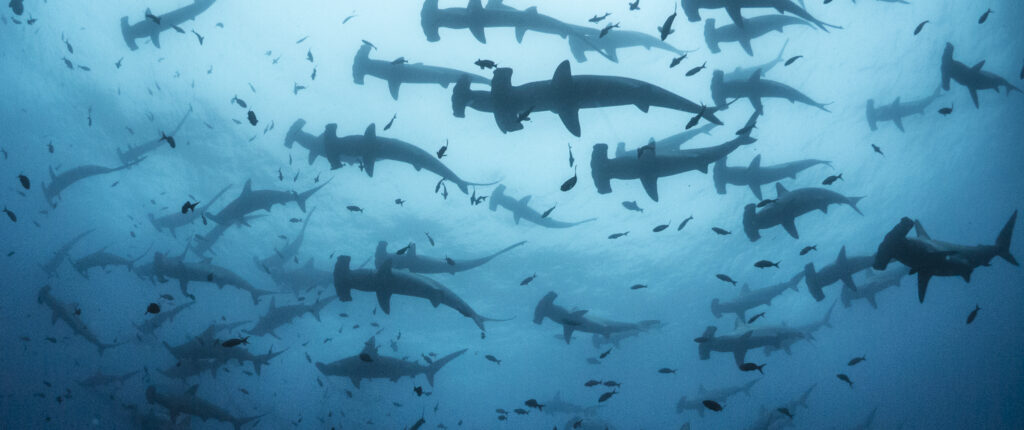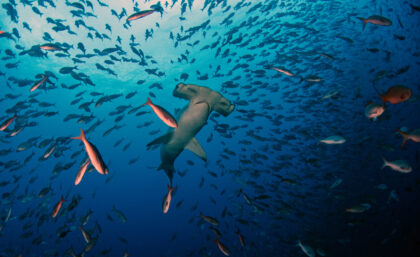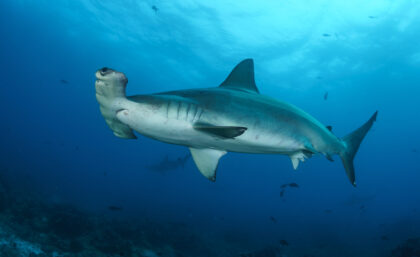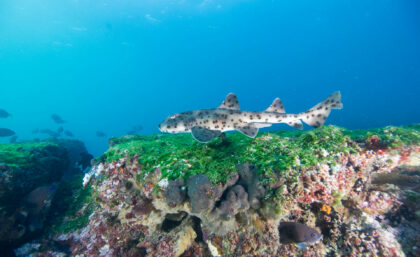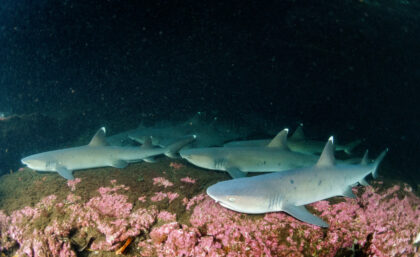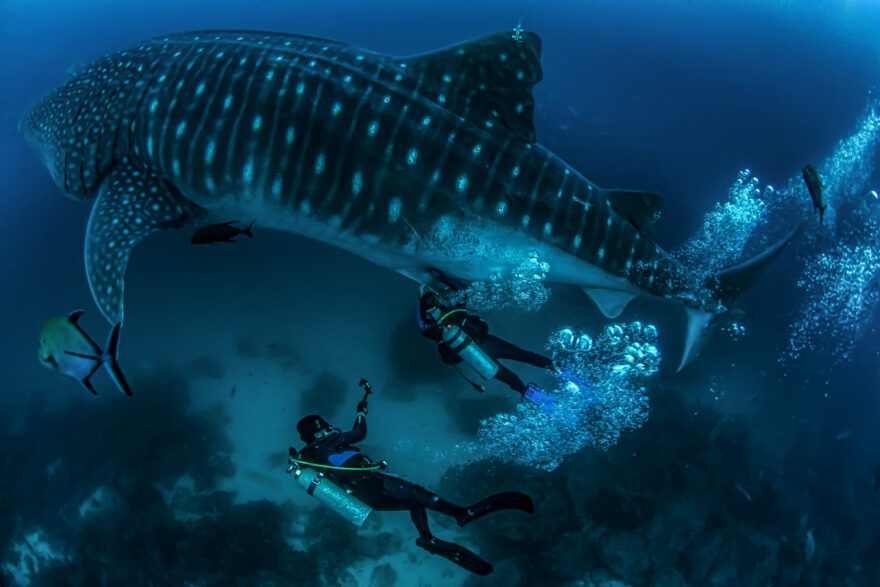
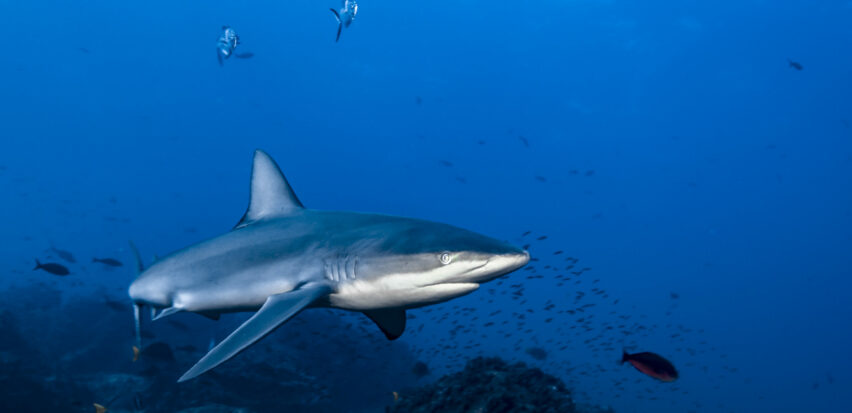
Overview
This is a critical time for sharks globally. They are facing increasing pressures from industrial fishing, habitat loss and plastic pollution. The Galapagos Marine Reserve (GMR) is unique in its high concentration of shark species. We are supporting research that will ensure protection for these vulnerable sharks throughout their lifetime.
Project Partners






Endangered sharks in numbers
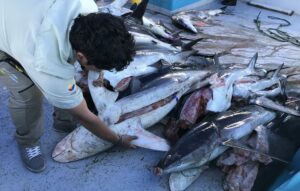
> 100 m
sharks harvested from our oceans globally every year by humans

700
adult female whale sharks pass through north of Galapagos every year
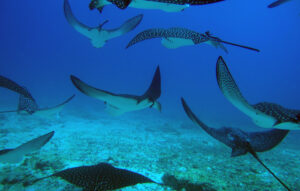
50
species of sharks and rays rely upon Galapagos for refuge and habitat
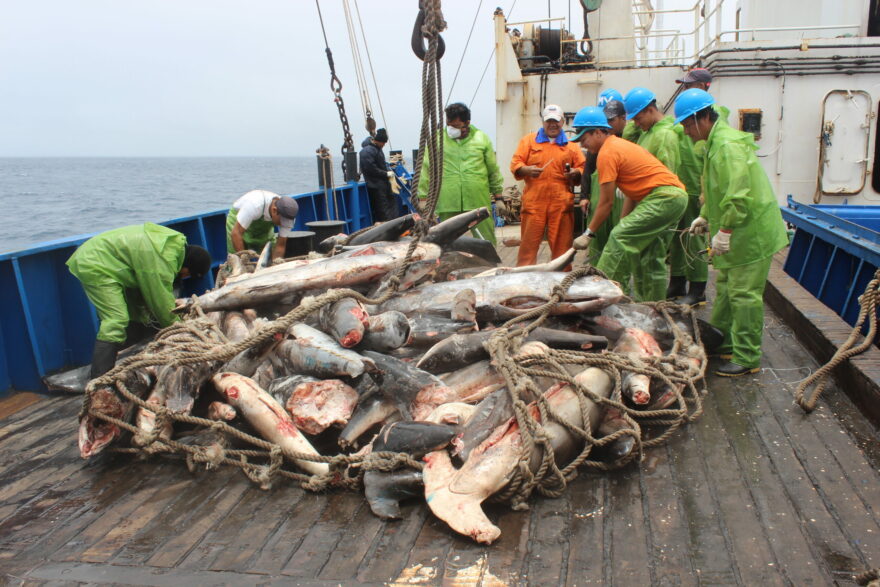
The problem
Every year, globally, humans harvest 100 million individual sharks from our oceans. Endangered species, including the scalloped hammerhead, dusky and whale shark, face threats from overfishing and bycatch. Recent research has also shown that the ingestion of microplastics may threaten the health of whale sharks and other filter-feeding marine species such as manta rays.
The GMR is home to the highest concentration of sharks in the world. It is a crucial location for Critically Endangered scalloped hammerheads and is one of the only places globally where large numbers still reside. Its whale shark population is also globally rare, with the vast majority mature females, as opposed to juvenile males found in other hotspots. Furthermore, of the females spotted in the GMR, over 90% appear to be pregnant, something that our partners are trying to determine for certain. When considering the lack of knowledge about whale shark reproductivity, it makes this unique population crucial to researching this species. Shallower waters in the GMR also provide important sites for blacktip shark pupping grounds and, in 2017, it was found that hammerhead sharks also have nursery sites in the GMR. These nursery grounds were designated in 2023 as one of the IUCN’s first Important Shark and Rays Areas (ISRAs), recognising their critical role in the lifecycle of a suite of threatened and poorly studied shark and ray species.
Many of the sharks found in the GMR are migratory, including whale and hammerhead sharks. Recent research has shown that some migratory sharks often move between the GMR and Cocos Island National Park in Costa Rica. Once these sharks move outside of the protected waters of the GMR, they are extremely vulnerable to industrial fishing.
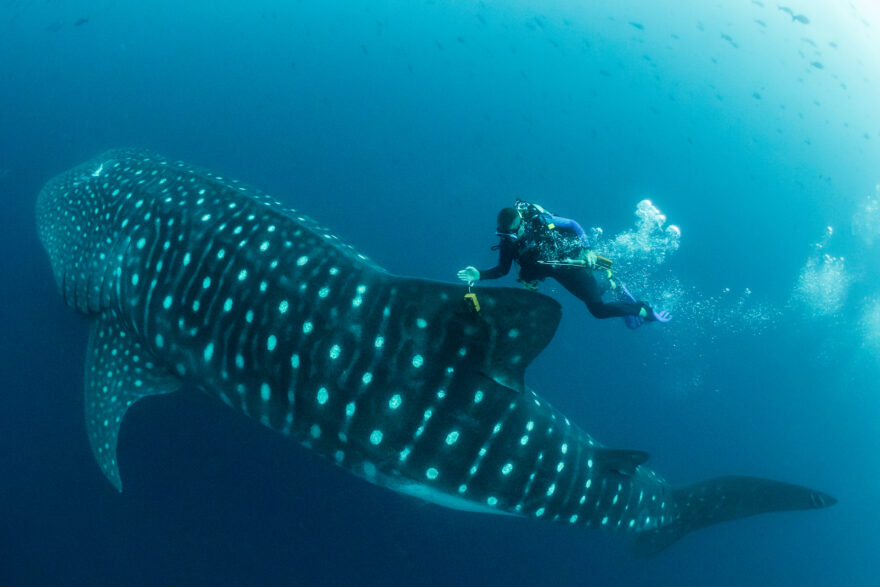
How we’re tackling it
As part of Galapagos Conservation Trust’s Endangered Sharks of Galapagos programme, we are:
- Building upon the research already undertaken to improve our understanding of whale shark migratory movements, as well as other open ocean migratory species.
- Using this evidence to strengthen the case for ensuring that at least 30% of Ecuadorian waters are well protected.
- Enhancing protections for shark nursery grounds within the GMR.
Photo gallery
Click on an image to view larger
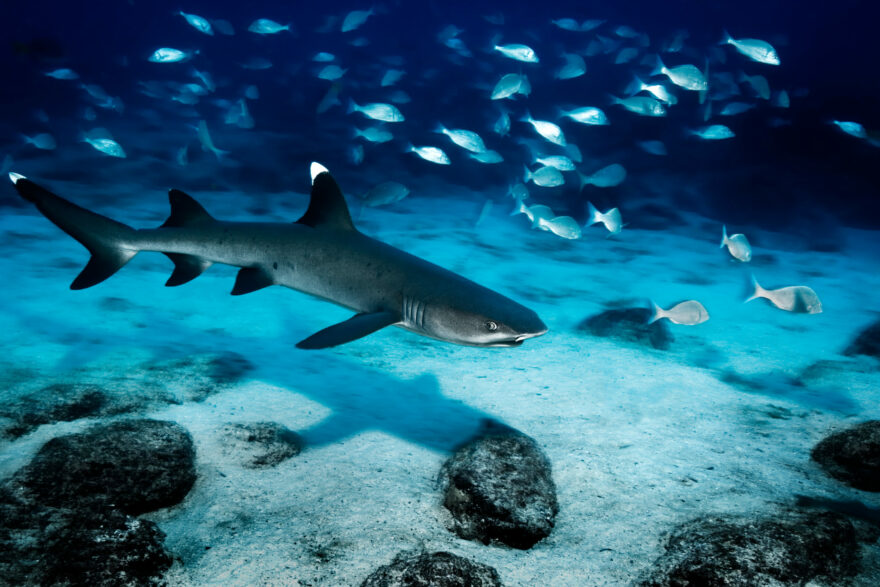
Project goals
The project aims to:
- improve understanding of the nursery dynamics of sharks in the GMR
- improve understanding of migratory routes and regional connectivity
- support the creation of a protected ‘swimway’ between the GMR and Costa Rica’s Cocos Island to protect migratory species
This project is kindly supported by
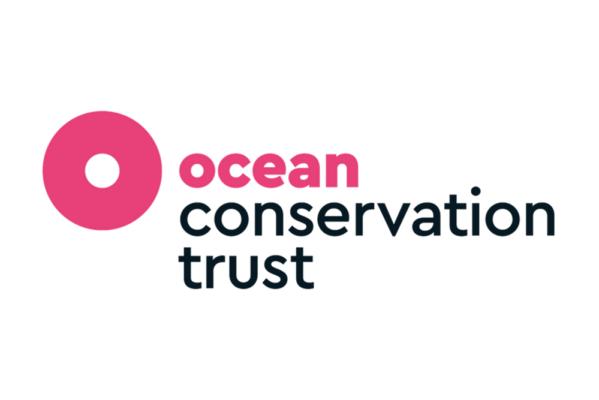

Project updates

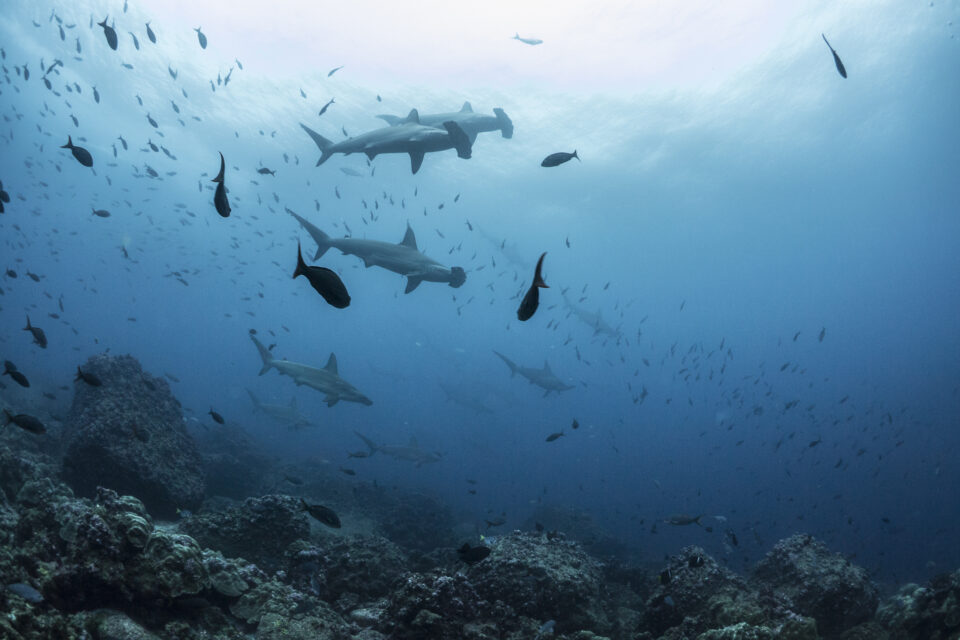
Galapagos marine reserve expansion brings hope - but new management challenges
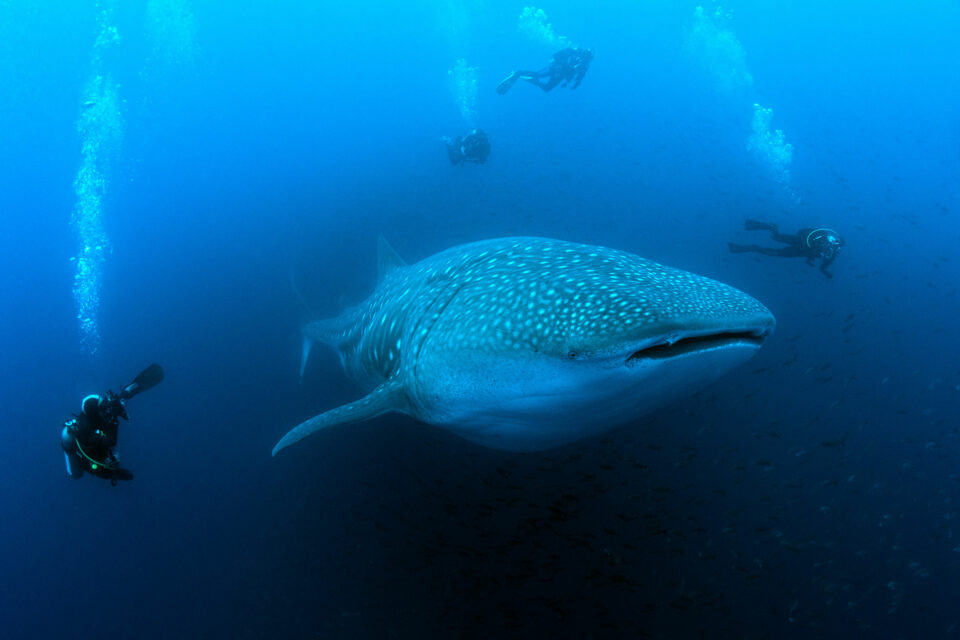
World Oceans Day 2022: Tagging Ocean Giants
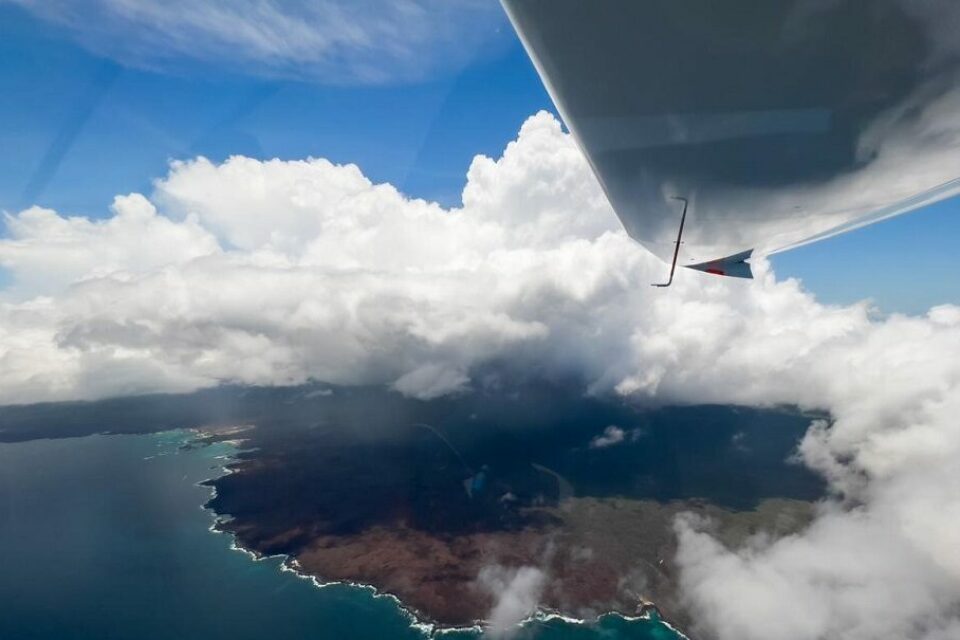
Scientists use ultra-light aircraft to tag and track whale sharks off the southern Galapagos islands for the first time
How you can help
Please help us conserve the endangered sharks of Galapagos by donating today or by adopting a hammerhead shark.
